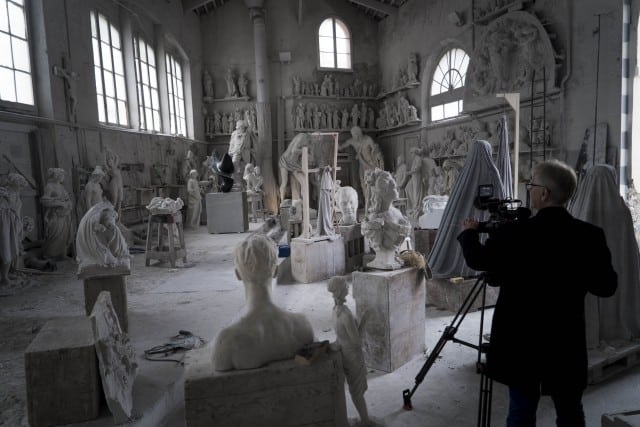
Dir: David Bickerstaff | Biopic | 89min
Director and cinematographer David Bickerstaff is back with the final part of his illuminating series Exhibition on Screen that offers an armchair view of current worldwide art shows, this time tracing the life and work of Michelangelo from his birth in Arezzo to his final days in Florence. Bickerstaff acts as his own cinematographer in this rather dry but learned documentary that may have enthused better had it made more of the human story behind the artist, such as Michelangelo’s relationship with Florentine despot Lorenzo de Medici, or his well-known ‘terribilita’ a sense of awe-inspiring grandeur often remarked upon by his contemporaries. Recent outings Goya: Visions of Flesh and Blood (2015); Vincent Van Gogh: a New Way (2015) and Painting the Modern Garden: Monet to Matisse (2016) are particularly exciting for this reason alone – the art treasures provide the icing of the cake.
Michelangelo, along with Leonardo di Vinci is considered one of the greatest artists of the Renaissance, a virtuoso craftsman, he was not only a sculptor but also a painter, architect, poet and spiritualist creating magnificent and diverse works such as the towering statue of David, the deeply moving Pietà in the Papal Basilica of St. Peter and his tour-de-force, the Sistine Chapel ceiling still leave us in awe of his skill, even today.
Spanning his 89 years (1475-1564), Michelangelo – Love and Death, takes a cinematic journey from the print and drawing rooms of Europe, through the great chapels and museums of Florence, Rome and the Vatican to explore the tempestuous life of Michelangelo. great deal of his work was commissioned and influenced by the Florentine Medici family who held sway in fifteenth century Florence. Bickerstaff’s pristine camerawork examines his work in minute detail with informed commentary particularly rom art critic Martin Hayford and various Italian curators and experts (including Francesca Nicoli who explains how carrera marble was the best medium for fine sculpture of the Renaissance style). The film delves deep – perhaps too deep for mainstream audiences – and features close-ups of the Rothschild Bronzes which were positively attributed to Michelangelo in 2015. It emerges that Michelangelo preferred men to women, but not in a sexual sense; more in the way that he worshipped the physicality of the male form, although he often endowed his male figures with more rounded thighs and buttocks, normally associated with Amazonian women, rather than the plump fulsomeness of women of his era. Highlighting the fact that sculptors of the day were given permission and access to study human corpses by the Church, in return for creating religious works on their behalf, the film also stresses how this experience made them more knowledgeable about human anatomy than their medical contemporaries.
Accompanied by an atmospheric score of lute music and enriched by its glorious Italian locations including Casa Buonarroti in Florence and the Medici Chapel and the Vatican, Michelangelo – Love and Death perfectly captures Michelangelo’s environment, and in turn, delivers a greater understanding of the artist and his work.
SCREENING NATIONWIDE from 14 JUNE 2017 | EXHIBITION ON SCREEN
This documentary complements the current Michelangelo event at London’s National Gallery.